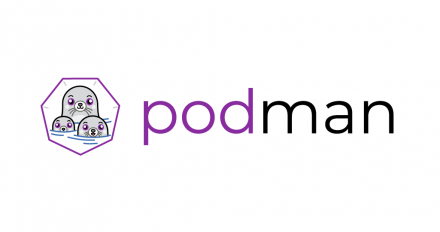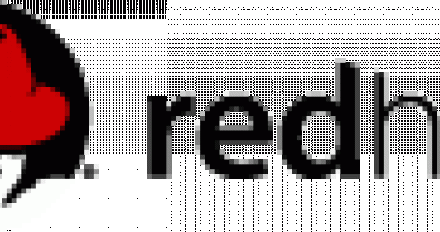Brent Baude
Brent is a software engineer with Red Hat where he works from his home in Rochester, MN. He is a co-maintainer of the libpod project.
Brent Baude's contributions

Article
Monitoring container vitality and availability with Podman
Brent Baude
This tutorial shows how to monitor the vitality and availability of containers using the healthcheck feature in Podman.

Article
Podman can now ease the transition to Kubernetes and CRI-O
Brent Baude
The ability to generate Kubernetes YAML from Podman is under development. Podman can now capture the description of local pods and containers and then help users transition to a more sophisticated orchestration environment like Kubernetes. This article provides a demo to illustrate the process.

Article
Podman: Managing pods and containers in a local container runtime
Brent Baude
The pod concept for containers was introduced in Kubernetes. Podman lets you manage pods locally, giving it an advantage over other container runtimes.
 Article
Article
Creating a custom atomic scan plug-in
Brent Baude
In my previous article where I introduced atomic scan, I largely talked about using atomic to scan your containers and images for CVE Vulnerabilities. I also discussed how atomic scan had been architected to a plug-in approached so that you can implement your own scanners. The plug-ins do not have to focus on vulnerabilities, it could be as simple a scanner that collects information about containers and images. In this blog, I will walk through how you can create your...
 Article
Article
Introducing atomic scan - Container vulnerability detection
Brent Baude
In the world of containers, there is a desperate need to be able to scan container images for known vulnerabilities and configuration problems, and as we proliferate containers and bundled applications into the enterprise, many groups and companies have started to build container scanning tools. Even Red Hat has been building a scanning tool based on the tried and true OpenSCAP project, but there were several problems we saw time and again. The problems with existing container scanning tools included...
 Article
Article
Creating custom Atomic trees, images, and installers - Part 2
Brent Baude
This blog is a continuation of " Creating custom Atomic trees, images, and installers - Part 1." In part one, we learned how to compose our own atomic trees and consume them in a guest. In part two, we will learn how to create our own disk images and installer media. Creating custom disk images As mentioned in the previous blog, the subcommand imagefactory can be used to create disk images. As of this writing, the imagefactory subcommand can output...

Article
Creating custom Atomic trees, images, and installers - Part 1
Brent Baude
Not too soon after people start using Atomic images, the question of customization soon follows. It is a natural progression for most people when they use Atomic. There are a number of different ways to accomplish using custom images not withstanding using docker and containers. The Atomic tool called ' rpm-ostree-toolbox' is emerging as the best tool for customizing Atomic. The 'rpm-ostree-toolbox' main command is actually a wrapper (much like virsh) for three subcommands: treecompose, imagefactory, and installer. With these...

Article
Monitoring container vitality and availability with Podman
Brent Baude
This tutorial shows how to monitor the vitality and availability of containers using the healthcheck feature in Podman.

Article
Podman can now ease the transition to Kubernetes and CRI-O
Brent Baude
The ability to generate Kubernetes YAML from Podman is under development. Podman can now capture the description of local pods and containers and then help users transition to a more sophisticated orchestration environment like Kubernetes. This article provides a demo to illustrate the process.

Article
Podman: Managing pods and containers in a local container runtime
Brent Baude
The pod concept for containers was introduced in Kubernetes. Podman lets you manage pods locally, giving it an advantage over other container runtimes.

Article
Creating a custom atomic scan plug-in
Brent Baude
In my previous article where I introduced atomic scan, I largely talked about using atomic to scan your containers and images for CVE Vulnerabilities. I also discussed how atomic scan had been architected to a plug-in approached so that you can implement your own scanners. The plug-ins do not have to focus on vulnerabilities, it could be as simple a scanner that collects information about containers and images. In this blog, I will walk through how you can create your...

Article
Introducing atomic scan - Container vulnerability detection
Brent Baude
In the world of containers, there is a desperate need to be able to scan container images for known vulnerabilities and configuration problems, and as we proliferate containers and bundled applications into the enterprise, many groups and companies have started to build container scanning tools. Even Red Hat has been building a scanning tool based on the tried and true OpenSCAP project, but there were several problems we saw time and again. The problems with existing container scanning tools included...

Article
Creating custom Atomic trees, images, and installers - Part 2
Brent Baude
This blog is a continuation of " Creating custom Atomic trees, images, and installers - Part 1." In part one, we learned how to compose our own atomic trees and consume them in a guest. In part two, we will learn how to create our own disk images and installer media. Creating custom disk images As mentioned in the previous blog, the subcommand imagefactory can be used to create disk images. As of this writing, the imagefactory subcommand can output...

Article
Creating custom Atomic trees, images, and installers - Part 1
Brent Baude
Not too soon after people start using Atomic images, the question of customization soon follows. It is a natural progression for most people when they use Atomic. There are a number of different ways to accomplish using custom images not withstanding using docker and containers. The Atomic tool called ' rpm-ostree-toolbox' is emerging as the best tool for customizing Atomic. The 'rpm-ostree-toolbox' main command is actually a wrapper (much like virsh) for three subcommands: treecompose, imagefactory, and installer. With these...
